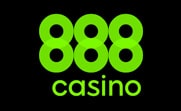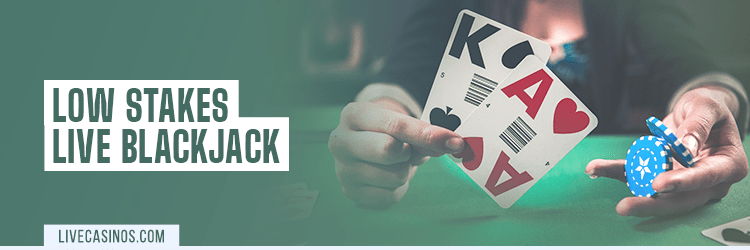The odds of winning a bet in roulette depend entirely on the type of bet you are making. The more numbers your bet covers, the higher the chances of winning are.
That much is easy to understand, or at least it should be. However, things become more complicated once you begin to factor in the house edge, payouts, bet combinations, and other details. Let’s not get ahead of ourselves, though. We’ll start with a simple answer to the most basic question – what are the odds of winning roulette?
You can refer to the table below to find out. It contains information for every common type of bet in roulette. Besides the odds or probability of winning, it features the payout and amount of numbers covered for each type of wager. A table such as this one is the roulette fan’s bread and butter. You have to know how every bet works, what it does, and how much it pays. You won’t get far with this game unless you don’t. While going into the nitty-gritty of every type of bet in roulette is not what this guide is all about, we already have a detailed beginner’s guide to all bets in roulette – you can find it here.
Roulette Payout Chart
Calculating Roulette Odds
While knowing the table by heart can be useful, it’s not necessary. However, if you want to know how to calculate odds in roulette, you’ll just need a few simple formulas.
For starters, let’s note that the standard European roulette wheel has 37 pockets. That’s 36 regular red and black pockets and a single green zero, which totals 37 possible outcomes in every round of roulette.
That means that, statistically, every number has 1 in 37 odds of being the result. That’s how we got the percentages – 1/37 = 2.7%.
To calculate the odds of winning any bet in roulette, all you have to do is multiply that percentage by the number of pockets covered for the bet.
For example, a Corner bet covers four numbers. 4 x 2.7 = 10.8, so the Corner bet has a 10.8% chance of winning, no matter which numbers it covers.
We can use a similar formula to calculate payouts in roulette as well. Again, we have to remember the fact that one pocket represents the house advantage. Therefore, we don’t use it when calculating payouts. Essentially, what you want to do is divide take the number of regular pockets (36), divide it by the number of pockets covered by the bet, and then subtract 1 because that’s your stake. This means the formula is:
36/Bet -1 = Payout
For example, let’s we don’t know what the payout of a Corner bet is and we want to find out. 36/4 – 1 = 9 – 1 = 8. Indeed, the payout for Corner bets is 8:1.
A powerhouse of online and live gambling with 8,500+ casino games. Over 430 live dealer tables from industry’s finest software developers. Heavy focus on sports betting as well. Cryptocurrency banking is impressive as well. Curacao-licensed.
VISIT CASINO
American Roulette Odds
Anyone with any experience with roulette will tell you that you don’t want to play American roulette, ever. It’s strictly a worse version of European roulette (or French roulette, for that matter.) There are no advantages to playing American roulette, hidden or otherwise. Don’t do it.
Why? Because the odds in American roulette are worse. It’s as simple as that. This version of the game boasts two zero pockets. This means that all bets in the game are slightly less likely to win while offering the same exact payouts. This further translates into a bigger house advantage and weaker RTP.
For the sake of diligence, we’ll include a payout chart for American roulette as well. If nothing else, it will illustrate why you should avoid it like the plague.
House Edge in Roulette
Every casino game ever made was designed so that the casino has an advantage. That’s just the nature of gambling – the house has an edge in every bet which tends to be more noticeable the more you play. Different casino games have different ways of giving that advantage. If you want a deep dive into how RTP and house edge work in casino games, check out this article.
The first thing to understand is that the main ‘culprit’ for the house advantage in roulette is the green zero pocket. It boils down to one important point – your chances of winning are always slightly smaller than you might think. That’s the advantage of the house in roulette – the 2.7% chance that the ball will land on the zero. And yes, you can bet on the zero, but there’s more to it than that.
Essentially, all payouts in roulette are structured as if the Zero didn’t exist. Payouts are calculated based on 1-in-36 odds for every pocket, even though there are 37 pockets on the wheel.
This is perhaps easiest to see if we look at even money bets like Red and Black. People assume they have a 50/50 shot at winning, and the payout of 1:1 would be a “fair” reward. However, your chances are actually 48.5%, but the payout isn’t slightly bigger to reflect that. This built-in disadvantage tends to compound the more you play. Moreover, having two zero pockets means that American Roulette has twice the house advantage of its European counterpart.
We have another example that explains house advantage in roulette perfectly. It’s a bit strange but bear with us.
Let’s imagine we are putting equal bets on both Red and Black. In most rounds, you wouldn’t win or lose any money this way. One bet loses, the other one wins, and both will double your stake if they win, which leaves you back at square one. However, once every 37 spins or so, the ball will land on green and you will lose both bets. That’s the house advantage at work.
The sheer quantity and quality of live casino games available to punters at CasinoChan are impressive, to say the least. Add the attractive welcome bonus, ongoing promotions, not to mention the friendly professional hosts, and your go-to pastime is about to elevate a level higher.
VISIT CASINO


































 Roulette
Roulette
 Blackjack
Blackjack
 Baccarat
Baccarat
 Poker
Poker
 Sic Bo
Sic Bo
 Dragon Tiger
Dragon Tiger
 Game Shows
Game Shows  Top 5 Games
Top 5 Games  See more
See more  Roulette Casinos
Roulette Casinos  Low Limit
Low Limit  High Limit / VIP
High Limit / VIP  Exclusive
Exclusive  How to Play
How to Play  Basic Strategy
Basic Strategy  Top Tips
Top Tips  FAQ
FAQ  Blackjack Casinos
Blackjack Casinos  Baccarat Casinos
Baccarat Casinos  Bonuses
Bonuses  Poker Casinos
Poker Casinos  Game Providers
Game Providers  Sic Bo Casinos
Sic Bo Casinos  Dragon Tiger Casinos
Dragon Tiger Casinos  Credit and Debit Card
Credit and Debit Card  e-Wallet
e-Wallet  Cryptocurrency
Cryptocurrency  Bank and Checks
Bank and Checks  Pay by Phone and SMS
Pay by Phone and SMS  See more
See more  How-To Guides
How-To Guides  Top Lists
Top Lists  In-Depth
In-Depth  Strategy
Strategy  Casino & Games
Casino & Games  Insight
Insight  News
News  Promotions
Promotions 
 Guide to Live Casinos
Guide to Live Casinos  Top 10 Live Casino Tips
Top 10 Live Casino Tips  FAQ & Help
FAQ & Help  Meet The Dealers
Meet The Dealers  Our Awards
Our Awards  Responsible Gambling
Responsible Gambling 





































 ENG
ENG 











 Facebook
Facebook
 Pinterest
Pinterest
 Twitter
Twitter
 LinkedIn
LinkedIn
 Copy Link
Copy Link 






















